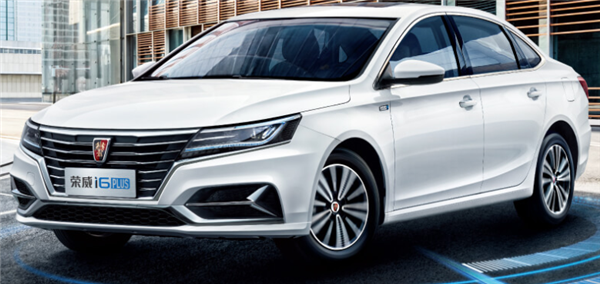China bans production of China Ⅴ light-duty vehicles from July 1, 2020
Shanghai (ZXZC)- Starting July 1, 2020, automakers in China will be forbidden to produce light-duty vehicles that comply with the China Ⅴ emission standards, and the stricter China Ⅵ is to be implemented nationwide, Chinese authorities announced on May 13.
The document, jointly hammered out by China's Ministry of Ecology and Environment, the Ministry of Industry and Information Technology (MIIT), Ministry of Commerce, and General Administration of Customs, also shows that the light-duty vehicles imported after July 1 should meet the China Ⅵ standards as well.
China's policy makers allow the China Ⅴ light-duty vehicles produced and imported before July 1 to be registered and sold until December 31, 2020 in regions where the China Ⅵ criteria have not been carried out there.

(Roewe i6 PLUS, photo source: Roewe)
The newest notice renders six-month grace period over a prior policy issued at the end of 2016 which requested all light-duty vehicles sold and registered from July 1, 2020 to be in compliance with the new emission standard.
The transition period will be available to provinces such as Liaoning, Jilin, Heilongjiang, Fujian, Jiangxi, Hubei, Hunan, Guangxi, Guizhou, Yunnan, Tibet, Gansu, Ningxia and Xinjiang, and part of regions in Shanxi, Inner Mongolia, Sichuan and Shaanxi, according to the document.
There are two sets of emission limits to be implemented in two phases nationwide— China 6a for July 2020 and China 6b for July 2023.
A number of cities and provinces who are struggling with severe air contamination have conducted both phases much earlier than the state's schedule. Some cities or provinces like Beijing, Shenzhen, Shanghai, Tianjin and Guangdong opted to skip the China 6a and directly execute the China 6b standard from July 1, 2019.
The last policy also postponed the expiry date of the PN (particle number) limit value at 6.0×1012 units/km for half a year to December 31, 2020. The China Ⅵ light-duty vehicles manufactured and imported from January 1, 2021 should be within the PN emission limit of 6.0×1011 units/km.
Apart from the PN, the limit values of other air and climate pollutants, including carbon monoxide (CO), total hydrocarbons (THC), nitrogen oxides (NOX), particulate matter (PM) and nitrous oxide (N2O) should be adjusted as schedule.
The China Association of Automobile Manufacturers (CAAM), the country's biggest auto industry association, proposed in Feb. the delay on the implementation of the PN limit value under the China Ⅵ standard. According to a survey done by the CAAM, as of Jan. 2020, there were around 3 million China Ⅵ vehicles kept as inventory, while a large portion of models features the PN limit value of 6.0×1012 units/km. It is too rush for companies to clear those inventories before July 1, 2020 as their production and sales schedules have been disturbed by the coronavirus spread.
Ye Shengji, deputy secretary general of the CAAM, considered that it is unscientific to enforce the laws and regulations that define the expiry date of market sales, because the downturn appearing since the second half of 2018 and the earlier implementation of China Ⅵ standards in some key regions have brought enterprises too much pressure to cope with, and the whole industry paid a huge economic price to fulfill the transition in the first half of 2019. It is the time to set a deadline for stopping the production of products under older standards and save more time for the market and automakers to digest inventories.

